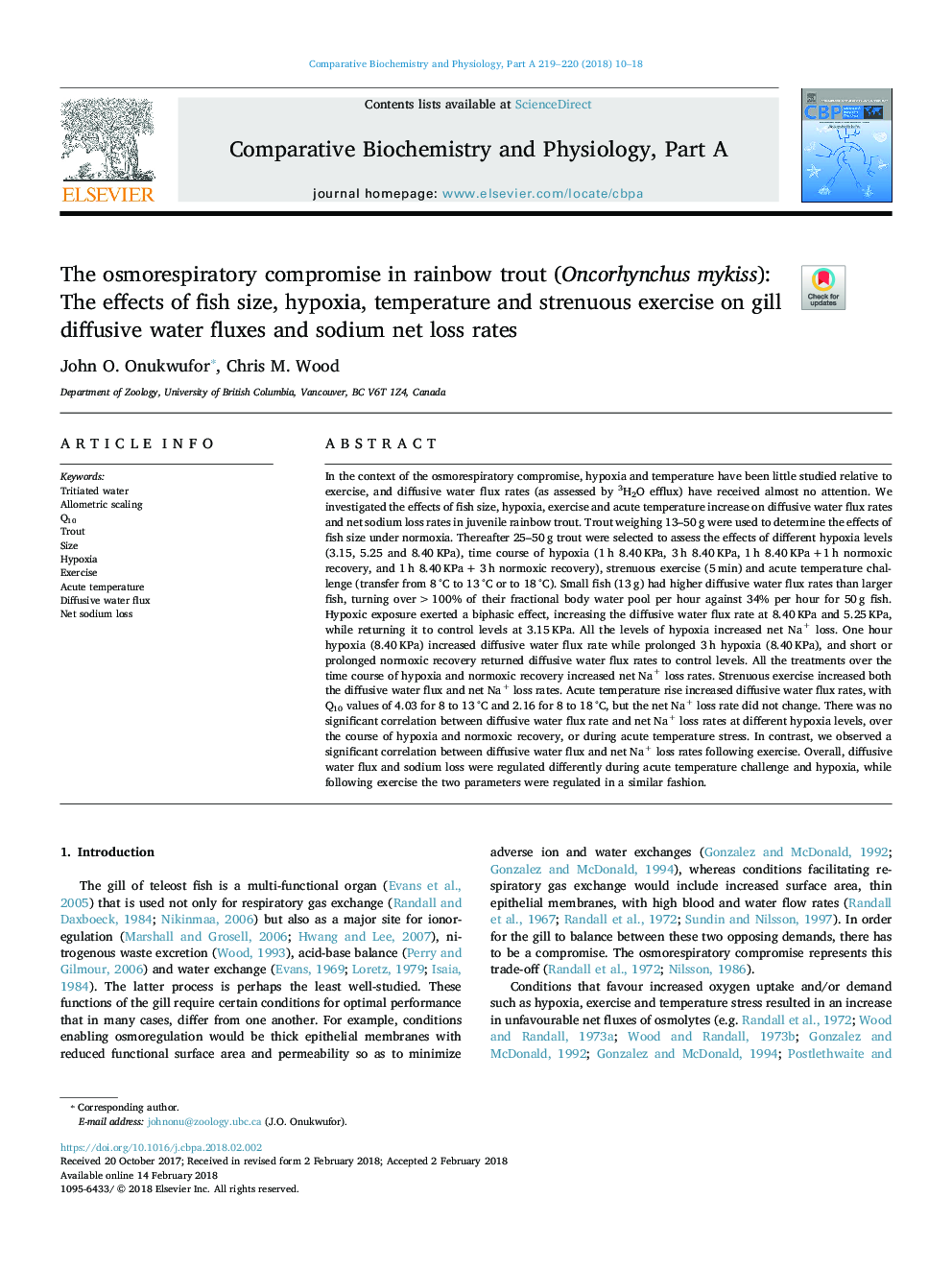| Article ID | Journal | Published Year | Pages | File Type |
|---|---|---|---|---|
| 8318203 | Comparative Biochemistry and Physiology Part A: Molecular & Integrative Physiology | 2018 | 9 Pages |
Abstract
In the context of the osmorespiratory compromise, hypoxia and temperature have been little studied relative to exercise, and diffusive water flux rates (as assessed by 3H2O efflux) have received almost no attention. We investigated the effects of fish size, hypoxia, exercise and acute temperature increase on diffusive water flux rates and net sodium loss rates in juvenile rainbow trout. Trout weighing 13-50â¯g were used to determine the effects of fish size under normoxia. Thereafter 25-50â¯g trout were selected to assess the effects of different hypoxia levels (3.15, 5.25 and 8.40â¯KPa), time course of hypoxia (1â¯h 8.40â¯KPa, 3â¯h 8.40â¯KPa, 1â¯h 8.40â¯KPaâ¯+1â¯h normoxic recovery, and 1â¯h 8.40â¯KPaâ¯+â¯3â¯h normoxic recovery), strenuous exercise (5â¯min) and acute temperature challenge (transfer from 8â¯Â°C to 13â¯Â°C or to 18â¯Â°C). Small fish (13â¯g) had higher diffusive water flux rates than larger fish, turning over >100% of their fractional body water pool per hour against 34% per hour for 50â¯g fish. Hypoxic exposure exerted a biphasic effect, increasing the diffusive water flux rate at 8.40â¯KPa and 5.25â¯KPa, while returning it to control levels at 3.15â¯KPa. All the levels of hypoxia increased net Na+ loss. One hour hypoxia (8.40â¯KPa) increased diffusive water flux rate while prolonged 3â¯h hypoxia (8.40â¯KPa), and short or prolonged normoxic recovery returned diffusive water flux rates to control levels. All the treatments over the time course of hypoxia and normoxic recovery increased net Na+ loss rates. Strenuous exercise increased both the diffusive water flux and net Na+ loss rates. Acute temperature rise increased diffusive water flux rates, with Q10 values of 4.03 for 8 to 13â¯Â°C and 2.16 for 8 to 18â¯Â°C, but the net Na+ loss rate did not change. There was no significant correlation between diffusive water flux rate and net Na+ loss rates at different hypoxia levels, over the course of hypoxia and normoxic recovery, or during acute temperature stress. In contrast, we observed a significant correlation between diffusive water flux and net Na+ loss rates following exercise. Overall, diffusive water flux and sodium loss were regulated differently during acute temperature challenge and hypoxia, while following exercise the two parameters were regulated in a similar fashion.
Related Topics
Life Sciences
Biochemistry, Genetics and Molecular Biology
Biochemistry
Authors
John O. Onukwufor, Chris M. Wood,
